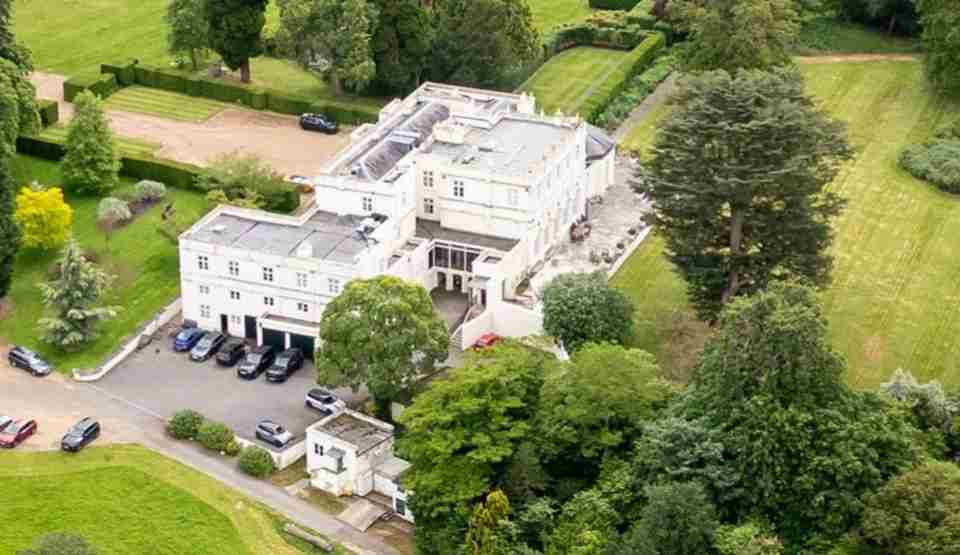Fresh revelations have surfaced explaining how Prince Andrew maintains residence in his extensive 30-room Windsor estate through an unusual lease arrangement with the Crown Estate.
According to documents reviewed by BBC News, the agreement essentially allowed Andrew to bypass traditional annual rent payments through substantial upfront contributions, including renovation costs.
Rather than making regular rental payments, Andrew invested approximately £8 million in initial lump sums, effectively prepaying his rent obligations for the entire 75-year lease term.

The financial arrangements have come under renewed scrutiny amid ongoing controversy surrounding Andrew’s association with convicted sex offender Jeffrey Epstein. This scrutiny intensified following new allegations in Virginia Giuffre’s recently published memoir, though Andrew has consistently and firmly denied any wrongdoing against Giuffre. Questions persist about how he finances his current lifestyle without income from royal duties.
The Lease Terms
Andrew, who recently relinquished titles including Duke of York, entered into the lease agreement in 2003 with the Crown Estate, which functions as an independent property management entity.
The impressive Grade II-listed Royal Lodge encompasses numerous structures including a gardener’s cottage, Chapel Lodge, a six-bedroom cottage, and security facilities.
The arrangement designates Andrew’s rent as “peppercorn” – typically a nominal sum like £1 paid annually on long-term leases – though in this instance, no actual payment is required. This represents a ceremonial rather than commercial transaction between Andrew and the Crown Estate.
This situation creates significant challenges for the Royal Family, as Andrew’s continued presence in such luxurious accommodations at Windsor presents an awkward optics problem given the surrounding controversies.
Maintenance Obligations
The lease stipulates that Andrew must fund Royal Lodge’s ongoing maintenance, including exterior stonework preservation every five years and interior painting every seven years.
His responsibilities include keeping the property “painted, papered, polished, and decorated” while maintaining the landscaped grounds and gardens. The landlords retain inspection rights to verify lease compliance.
Additional lease provisions prohibit helicopter landings on the property and ban gambling activities.
Financial Breakdown
National Audit Office records indicate Andrew’s upfront commitments included £5 million for repairs, £2.5 million to eliminate future rent payments, and an additional £1 million premium to the Crown Estate.
Questions naturally arise regarding Andrew’s ability to assemble over £8 million for this lifetime lease arrangement in 2003.
This prepayment structure clarifies his current ability to maintain residence without monthly obligations.
The agreement calculated a theoretical annual rent of £260,000, acknowledging that commercial rental would prove difficult due to security constraints.
The NAO noted that actual refurbishment costs exceeded £7.5 million, surpassing the initially projected £5 million.
Historical Context
Similar Crown Estate arrangements exist. In 1998, Prince Edward secured a 50-year Bagshot Park lease, contributing approximately £580,000 for renovations (later increasing to £1.4 million).
Edward’s smaller upfront payment required him to pay roughly £90,000 annually, a figure that has increased with inflation.
Buckingham Palace has reportedly sought Andrew’s relocation from such prominent accommodations, though his independently held lease remains legally binding.
The Original Rationale
Two decades ago, when Andrew was less controversial, the Royal Lodge arrangement appeared financially advantageous compared to maintaining it as a “grace and favour” residence with no commercial consideration.
The property, previously home to the Queen Mother, required significant modernization. Having Andrew finance the renovations eliminated public expenditure concerns.
Given security requirements and the property’s Windsor estate location, the Crown Estate preferred a financially contributing royal tenant over attempting to market it commercially.
An NAO assessment concluded the arrangement fulfilled the Crown Estate’s “value for money” obligations and represented fair consideration.
The King discontinued financial support for his brother last year, leaving uncertainty about how Andrew covers ongoing expenses including security and mandatory maintenance costs.RetryClaude can make mistakes. Please double-check responses.






